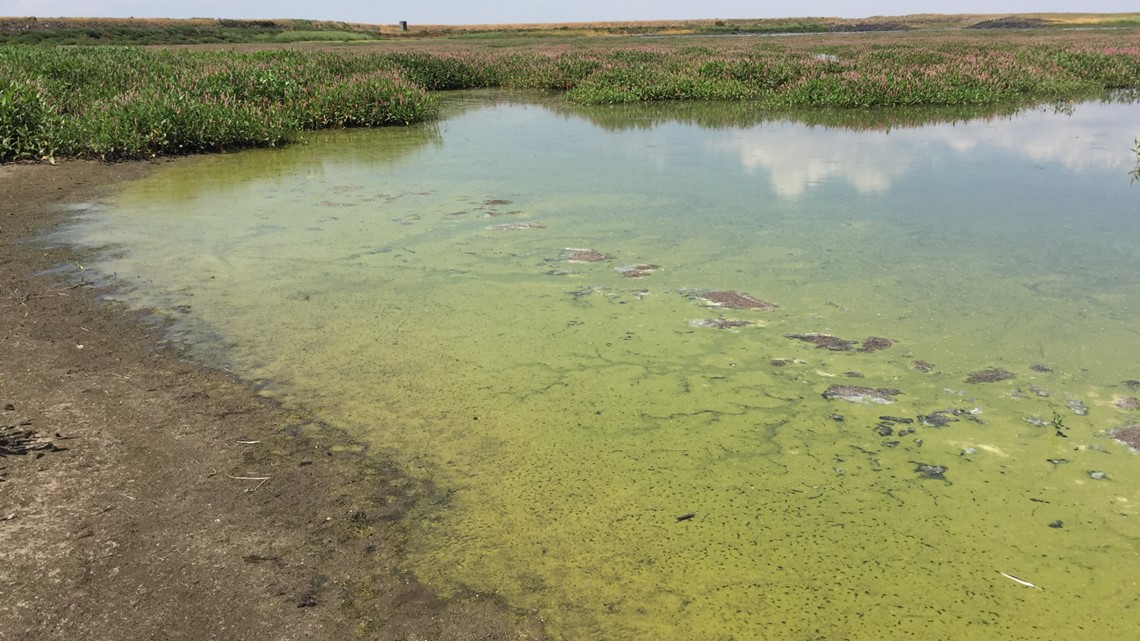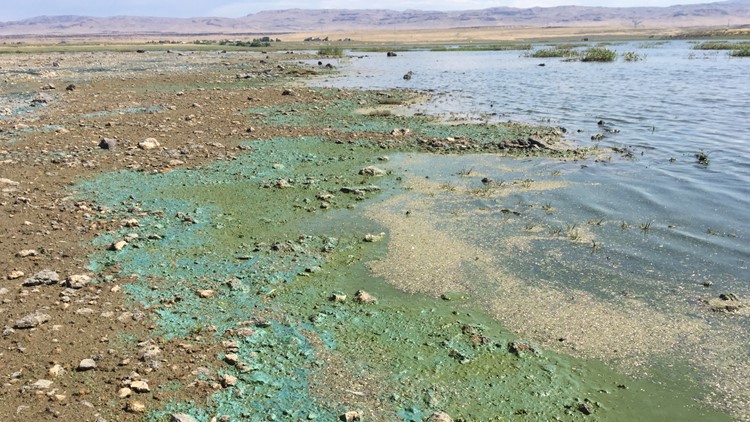BOISE, Idaho — Officials have issued a health advisory for three Southwest Idaho reservoirs after high levels of toxin-producing cyanobacteria were recently found in samples taken from the reservoirs.
The advisory includes Mountain Home Reservoir in Elmore County, and Indian Creek Reservoir and Blacks Creek Reservoir, both in Ada County.
The Central Distric Health Department urged people to use extra caution when recreating in or near the water.
Cyanobacteria produces a toxin which can be harmful to people pets and livestock. Those with liver or kidney damage are at an increased risk of illness.
According to CDHD, water samples were taken from recreational access areas along each of the reservoir banks, which included dried algae. Due to the low amount of water currently in each of the reservoirs, it is likely the harmful algal blooms cover the entirety of each reservoir, official said.
RELATED: Health advisory issued after high concentrations of cyanobacteria found at Brownlee Reservoir
While cyanobacteria are a natural part of most Idaho bodies of water, their populations rise during higher temperatures and can bloom, releasing toxic chemical compounds - called cyanotoxins - into the water. According to the health department, blooms can vary in appearance, and may look like mats, foam, spilled paint, or surface scum, and have a foul odor.


Anyone recreating near or in any of the three reservoirs is urged to take the following precautions:
- Avoid swimming, wading, or other activities. Take extra precautions to ensure children, pets, and livestock are not exposed to the water.
- Do not drink or cook with water containing a bloom. Boiling and filtering the water can increase the risk.
- Wash your hands thoroughly after handling fish caught in water experiencing a bloom. Cyanotoxins can accumulate in fish and the risk to people is being researched. Any fish caught should be cleaned and washed thoroughly in uncontaminated water and any internal organs disposed of before consumption. If people choose to eat fish from this area, filet the fish and remove all of the fat, skin, and organs before cooking.
- Clean with potable water as soon as possible if water contacts skin or pet fur.
Symptoms of cyanotoxin exposure include rashes, hives, diarrhea, vomiting, coughing, and/or wheezing. More severe symptoms affecting the liver and nervous system may result from ingesting water.
If you, a child or a pet is exposed, wash with soap and water, watch for symptoms and consult your healthcare provider or your pet's veterinarian if symptoms persist.
For more information about harmful algal blooms and recreation water quality advisories, visit DEQ's website.



